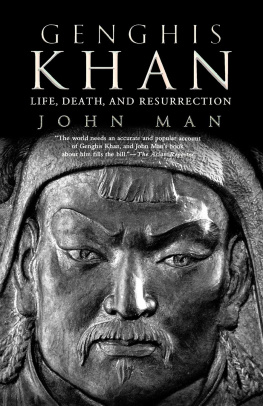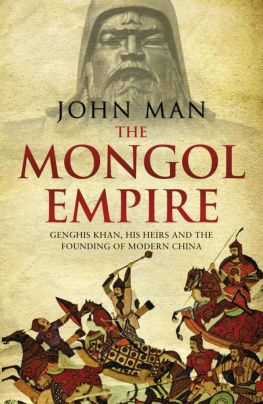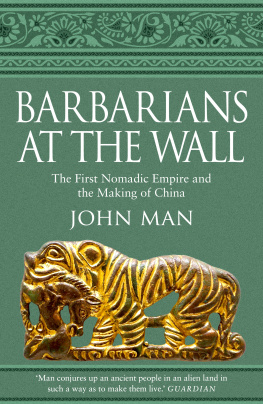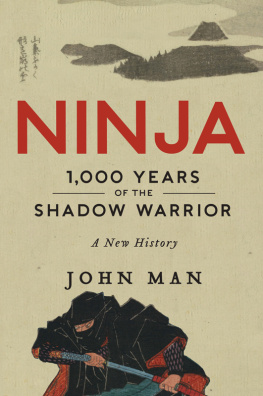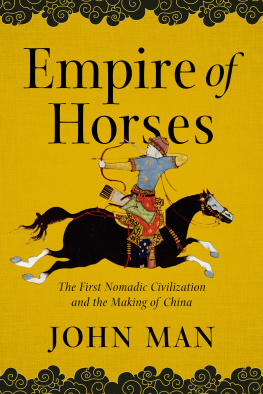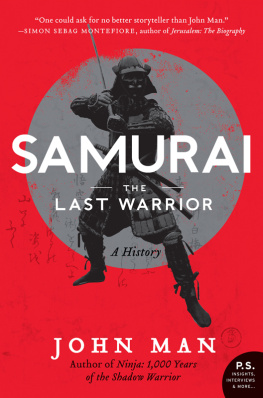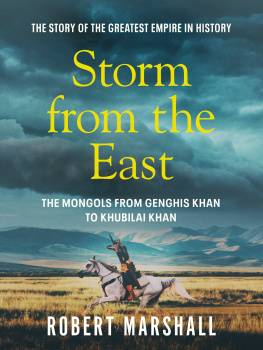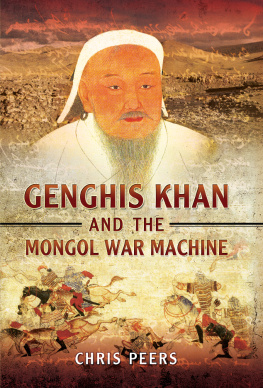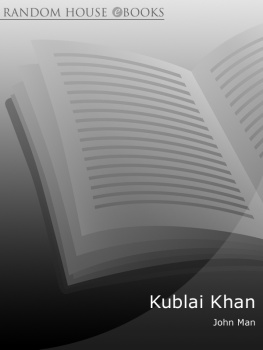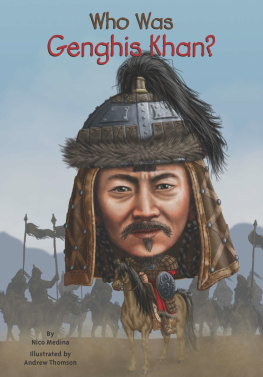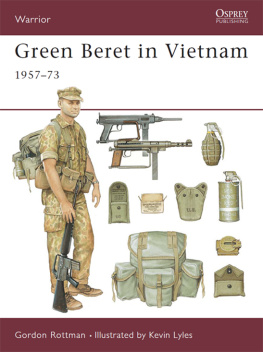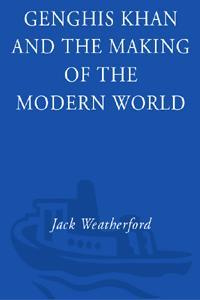GENGHIS KHAN
Life, Death and Resurrection
JOHN MAN

This eBook is copyright material and must not be copied, reproduced, transferred, distributed, leased, licensed or publicly performed or used in any way except as specifically permitted in writing by the publishers, as allowed under the terms and conditions under which it was purchased or as strictly permitted by applicable copyright law. Any unauthorised distribution or use of this text may be a direct infringement of the authors and publishers rights and those responsible may be liable in law accordingly.
Version 1.0
Epub ISBN 9781409045441
www.randomhouse.co.uk
GENGHIS KHAN
A BANTAM BOOK: 0 553 81498 2
Originally published in Great Britain by Bantam Press,
a division of Transworld Publishers
PRINTING HISTORY
Bantam Press edition published 2004
Bantam edition published 2005
1 3 5 7 9 10 8 6 4 2
Copyright John Man 2004
Maps by Hardlines
The right of John Man to be identified as the author of this work has been asserted in accordance with sections 77 and 78 of the Copyright Designs and Patents Act 1988.
Condition of Sale
This book is sold subject to the condition that it shall not, by way of trade or otherwise, be lent, re-sold, hired out or otherwise circulated in any form of binding or cover other than that in which it is published and without a similar condition including this condition being imposed on the subsequent purchaser.
Set in 11/13pt Sabon by Falcon Oast Graphic Art Ltd.
Bantam Books are published by Transworld Publishers, 6163 Uxbridge Road, London W5 5SA, a division of The Random House Group Ltd, in Australia by Random House Australia (Pty) Ltd, 20 Alfred Street, Milsons Point, Sydney, NSW 2061, Australia, in New Zealand by Random House New Zealand Ltd, 18 Poland Road, Glenfield, Auckland 10, New Zealand and in South Africa by Random House (Pty) Ltd, Endulini, 5a Jubilee Road, Parktown 2193, South Africa.
Printed and bound in Great Britain by Cox & Wyman Ltd, Reading, Berkshire.
Papers used by Transworld Publishers are natural, recyclable products made from wood grown in sustainable forests. The manufacturing processes conform to the environmental regulations of the country of origin.
CONTENTS
For Dushka, Will, Em,
Tom and Jonathan
John Man is a historian and traveller with special interests in Mongolia and the history of written communication. His Gobi: Tracking the Desert was the first book on the subject since the 1920s. He is also the author of The Atlas of the Year 1000, a portrait of the world at the turn of the millennium, Alpha Beta, on the roots of the alphabet, and The Gutenberg Revolution, an examination of the origins and impact of printing. His latest book is Attila. He lives in London.
Praise for Genghis Khan:
Absorbing and beautifully written... a thrilling account of Genghis Khans life, death and his continuing influence... a gripping present-day quest Guardian
A first-rate travel book, not so much a life of the Khan but a search for him... Man has scholarly gifts as well as acute intelligence and a winning way with words. This is a fine introduction to the subject, as well as a rattling good read
Felipe Fernandez-Armesto, Independent
A fine, well-written and well-researched book
Mail on Sunday
Compelling... Mans perspective is as clearsighted and invigorating as that of the Mongol horsemen he travels with... this is an eloquent account, not only of a fascinating historical figure and his people, but of the resonance of history itself
Waterstones Books Quarterly
Enthralling and colourful Independent on Sunday
This is a great story Spectator
Fascinating... every bit as gripping as its subject deserves... vividly captures the warlords charisma, together with the mixture of ruthlessness, military genius and self-belief which, Man argues, made him the greatest leader ever... History doesnt come much more enthralling than this
Yorkshire Evening Post
Mans excellent writing breathes new life into a character whose spirit lives on in China and Mongolia today
Historical Novels Review
Man is an excellent guide... well-versed in Mongolian, he has travelled extensively in the country while researching the more mysterious elements of Genghis life, and this experience shines through the book... he writes knowledgeably
Literary Review
Fascinating... a wonderfully diverting study Ink
www.booksattransworld.co.uk
Also by John Man
Gobi: Tracking the Desert
Atlas of the Year 1000
Alpha Beta
The Gutenberg Revolution
Attila
Where is Genghis Khan? He is not dead. What happened was this:
There was a king in a far country with a daughter fair as the sun. Genghis Khan asked for the maiden. The king secretly said to his daughter: Here is a knife, very small and very sharp. Hide it in your clothes, and when the time comes you know what to do. As Holy Genghis lay with her, she took out the knife and castrated him. Genghis cried out when he felt the cut, and the people came in, but Genghis only said to them: Take this girl away; I wish to sleep.
He slept and from that sleep he has never awakened. But would not Holy Genghis heal himself? When he is healed, he will awake and save his people.
Mongol folk tale, adapted from
Owen Lattimore, Mongol Journeys
Genghis Khan is a spirit for all of us.
Sharaldai, theologian,
Mausoleum of Genghis Khan, Inner Mongolia
MAPS
ILLUSTRATIONS
First section
Second section
A NOTE ON SPELLING
Genghis v. Chingis
In English the name has several spellings, the most common being Genghis, pronounced Djengis, with the first g soft as in general, the second g hard as in guest. Both spelling and pronunciation are faulty, a fault often compounded by English-speakers making the first g hard as well as the second. The soft first g of English (and French) derives from Persian and Arabic transliterations. There is no accepted national, let alone international norm. The old Mongol spelling of his name, still current in the vertical script of Inner Mongolia, transliterates as Chinggis, which is how some fastidious academics spell him. He is in fact pronounced Chingis (ch as in church; g as in finger, not as in singer), which is how he is spelled in modern Mongolian (and Russian). This usage is growing; but not, my publisher felt, fast enough to ensure universal recognition. The world, it seems, is not yet ready to abandon Genghis so thus he remains in this book.
For other Mongol names, I have mainly opted for a transliteration that best represents the modern Mongol.
Pinyin v. WadeGiles
The two systems of transliterating Chinese still overlap. I have gone for whichever seems more appropriate in context, using pinyin mainly for modern names, WadeGiles mainly for historical ones.
ACKNOWLEDGEMENTS
My thanks to the following for their help and guidance.
Overall, Charles Bawden, Emeritus Professor, and former Professor of Mongolian at the School of Oriental and African Studies, London, who planted the seed, and Bayarmandakh Gaunt, Mongolian and Inner Asian Studies Unit, Cambridge, who nurtured it; Igor de Rachewiltz, School of Pacific and Asian Studies, Australian National University, especially for sharing his experience of Burkhan Khaldun at a crucial moment; Chris Tyler-Smith, Department of Biochemistry, Oxford University, for his help on Genghiss genetic legacy.
Next page
